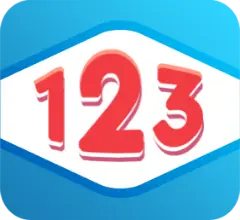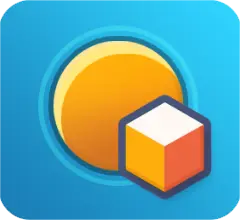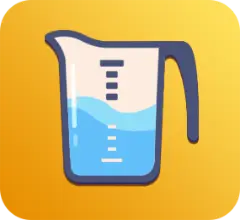4th Grade Math
Math Explanation is an online resource that offers a wide range of math skills, lessons, and games for year 4 students. It covers various math topics, from basic arithmetic to advanced calculus, providing step-by-step solutions and explanations for different math problems. The platform teaches different methods and techniques to solve problems and offers detailed explanations for each step. It also allows students to check their answers, see examples, and learn tips and tricks to improve their math skills.
Start Practice Math Browse SkillsTopics
Browse Skills
Number and Algebra
-
Arranging numbers in ascending order
Whole Numbers
-
Arranging numbers in descending order
Whole Numbers
-
Comparing numbers using the symbols <, = or >
Whole Numbers
-
Expanded notation up to 99 999
Whole Numbers
-
Identifying odd and even numbers
Whole Numbers
-
Largest number possible
Whole Numbers
-
Partition numbers in non-standard form
Whole Numbers
-
Partition of numbers in standard form
Whole Numbers
-
Partitioning of place value in non-standard form
Whole Numbers
-
Properties of odd and even numbers
Whole Numbers
-
Round numbers to the nearest 10
Whole Numbers
-
Round numbers to the nearest 10 000
Whole Numbers
-
Round numbers to the nearest 100
Whole Numbers
-
Round numbers to the nearest 1000
Whole Numbers
-
Smallest number possible
Whole Numbers
-
Stating place values up to 99 999
Whole Numbers
-
Write numbers of up to tens of thousands in words
Whole Numbers
-
Write words from numbers up to tens of thousands
Whole Numbers
-
Problem solving with addition
Additions and subtraction
-
Problem solving with Subtraction
Additions and subtraction
-
Solving addition problems with money
Additions and subtraction
-
Solving subtraction problems with money
Additions and subtraction
-
Vertical addition with 4 digits with carrying
Additions and subtraction
-
Vertical addition with 4 digits without carrying
Additions and subtraction
-
Vertical addition with 5 digits with carrying
Additions and subtraction
-
Vertical addition with 5 digits without carrying
Additions and subtraction
-
Vertical subtraction with 4 digits with borrowing
Additions and subtraction
-
Vertical subtraction with 4 digits without borrowing
Additions and subtraction
-
Vertical subtraction with 5 digits with borrowing
Additions and subtraction
-
Vertical subtraction with 5 digits without borrowing
Additions and subtraction
-
Addition number sentences
Patterns and Algebra
-
Number patterns by multiples of 3, 4,5, 6, 7, 8 and
9
Patterns and Algebra
-
Number patterns with multiples of 3, 4,5, 6, 7, 8 and
9
Patterns and Algebra
-
Number sentence involving addition operations
Patterns and Algebra
-
Number sentence involving subtraction operations
Patterns and Algebra
-
Problem solving with number sentence
Patterns and Algebra
-
Properties of odd and even numbers with addition
Patterns and Algebra
-
Properties of odd and even numbers with subtraction
Patterns and Algebra
-
Comparing fractions with denominators of 2, 3 &
6
Fraction and decimals
-
Comparing fractions with denominators of 2, 4 &
8
Fraction and decimals
-
Comparing fractions with denominators of 2, 5 &
10
Fraction and decimals
-
Conversion of money to decimal place
Fraction and decimals
-
Converting decimal to fractions
Fraction and decimals
-
Converting fractions to decimal
Fraction and decimals
-
Equivalent fractions with denominators of 2, 3 &
6
Fraction and decimals
-
Equivalent fractions with denominators of 2, 4 &
8
Fraction and decimals
-
Equivalent fractions with denominators of 2, 5 &
10
Fraction and decimals
-
Improper fractions
Fraction and decimals
-
Measurement conversion to decimal place
Fraction and decimals
-
Mixed numerals
Fraction and decimals
-
Place value to partition decimals
Fraction and decimals
-
Rounding decimals to the nearest whole number
Fraction and decimals
-
Tenths & Hundredths
Fraction and decimals
-
1 times table
Multiplication & Division
-
10 times table
Multiplication & Division
-
11 times table
Multiplication & Division
-
12 times table
Multiplication & Division
-
2 times table
Multiplication & Division
-
3 times table
Multiplication & Division
-
4 times table
Multiplication & Division
-
5 times table
Multiplication & Division
-
6 times table
Multiplication & Division
-
7 times table
Multiplication & Division
-
8 times table
Multiplication & Division
-
9 times table
Multiplication & Division
-
Applying the inverse relationship of multiplication and
division
Multiplication & Division
-
Determining factors
Multiplication & Division
-
Division as repeated subtraction - 2, 4 & 8
Multiplication & Division
-
Division as repeated subtraction - 3, 6 & 9
Multiplication & Division
-
Division as repeated subtraction - 7
Multiplication & Division
-
Division by 1
Multiplication & Division
-
Division by 10
Multiplication & Division
-
Division by 11
Multiplication & Division
-
Division by 12
Multiplication & Division
-
Division by 2
Multiplication & Division
-
Division by 3
Multiplication & Division
-
Division by 4
Multiplication & Division
-
Division by 5
Multiplication & Division
-
Division by 6
Multiplication & Division
-
Division by 7
Multiplication & Division
-
Division by 8
Multiplication & Division
-
Division by 9
Multiplication & Division
-
Division wheel 7 - 12 division
Multiplication & Division
-
Equivalent multiplications
Multiplication & Division
-
Flipping a shape
Multiplication & Division
-
Horizontal division with remainders
Multiplication & Division
-
Long division with remainders
Multiplication & Division
-
Long division without remainders
Multiplication & Division
-
Multiplication as repeated addition - x2, x4 &
x8
Multiplication & Division
-
Multiplication as repeated addition - x3, x6 &
x9
Multiplication & Division
-
Multiplication as repeated addition - x7
Multiplication & Division
-
Multiplication facts - x2, x4 & x8
Multiplication & Division
-
Multiplication facts - x3, x6 & x9
Multiplication & Division
-
Multiplication facts - x7
Multiplication & Division
-
Multiplication wheel 1 - 6 times table
Multiplication & Division
-
Multiplication wheel 7 - 12 times table
Multiplication & Division
-
Problem solving with division
Multiplication & Division
-
Problem solving with multiplication
Multiplication & Division
-
Properties of multiplication - x3, x6, x7 & x9
Multiplication & Division
-
Properties of odd and even numbers with
multiplication
Multiplication & Division
Measurement and Geometry
-
Converting centimetres and millimetres to
millimetres
Length
-
Converting centimetres to metres and centimetres
Length
-
Converting metres to centimetres
Length
-
Converting millimetres to centimetres and
millimetres
Length
-
Identify temperature as cold, warm or hot
Length
-
Measurement of 2D shape
Length
-
Measurement of length in centimetres
Length
-
Measurement of length in metres
Length
-
Measurement of length in millimetres
Length
-
Recording a thermometer
Length
-
Using a thermometer to compare temperature
Length
-
Using units to measure of length in metres
Length
-
Compare objects in squared centimetres and metres
Area
-
Measurement of shapes using a grid Advance
Area
-
Measurement of shapes using a grid Basic
Area
-
Squared metre or squared centimetre?
Area
-
3D objects and their nets
Volume & Capacity
-
Comparing cubic blocks
Volume & Capacity
-
Conversion of litres to millilitres
Volume & Capacity
-
Conversion of millilitres to litres
Volume & Capacity
-
Counting blocks
Volume & Capacity
-
Finding the total capacity in litres and millilitres
Volume & Capacity
-
Finding the total capacity in millilitres
Volume & Capacity
-
Measuring volume in cubic centimetres
Volume & Capacity
-
Using the correct measurement to measure capacity
Volume & Capacity
-
Comparing objects and their mass
Mass
-
Conversion of mass Grams to kilograms
Mass
-
Conversion of mass Kilograms to grams
Mass
-
Converting to grams with fractions
Mass
-
Measuring mass with a scale
Mass
-
Expressing 'to' and 'past' with a digital clock
Time
-
Expressing 'to' and 'past' with an analogue clock
Time
-
Problem solving with time
Time
-
Reading analog and digital clocks
Time
-
Reading the calendar
Time
-
Reading timetables
Time
-
Recording time with a digital clock
Time
-
Recording time with an analog clock
Time
-
Identifying prisms
3D Shape
-
Views of 3D objects
3D Shape
-
Combining shapes
2D Shape
-
Identifying symmetrical patterns
2D Shape
-
Identifying tesselating shapes
2D Shape
-
Naming shapes within composite figures
2D Shape
-
Sliding a shape
2D Shape
-
Splitting shapes
2D Shape
-
Turning a shape
2D Shape
-
Classifying angles
Angles
-
Describing angles
Angles
-
Ordering angles from largest to smallest
Angles
-
Ordering angles from smallest to largest
Angles
-
Placing position
Position
-
Positions and maps
Position
-
Understanding compass directions Advance
Position
-
Understanding compass directions Basic
Position
-
Using position to locate an object
Position
Statistics and Probability
Math Explanation
Australia's Most Engaging Primary Maths Software.











